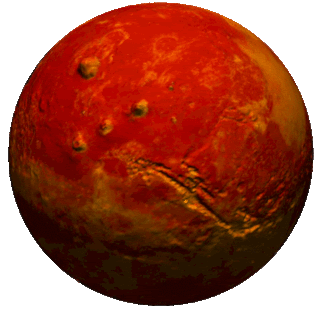Ascraeus Mons is one of the prominent shield volcanoes situated on the Tharsis volcanic plateau on the planet Mars. Alongside its neighboring volcanoes, Ascraeus Mons contributes to the unique geologic tapestry of the Red Planet and provides valuable insights into its volcanic history and formation.
Ascraeus Mons serves as a fascinating example of the dynamic geological processes that have shaped Mars over billions of years. Its towering presence and the remnants of its volcanic activity offer a window into the planet’s history and its ongoing geologic transformations. The study of Ascraeus Mons and its fellow Tharsis volcanoes continues to enhance our understanding of planetary geology and the forces that have shaped worlds beyond Earth.
Location
Tharsis volcanic plateau, Mars
Physical Characteristics
Ascending to an elevation of approximately 12 miles (20 kilometers) above the surrounding Martian terrain, Ascraeus Mons is a towering shield volcano. Its base spans a considerable area, with the volcano’s slopes extending outward from its central vent in a radial pattern. These slopes, relatively gentle in comparison to stratovolcanoes found on Earth, are a result of successive lava flows and volcanic eruptions over time
Formation and Geological Significance
Ascraeus Mons, like its counterparts in the Tharsis region, owes its existence to the complex interplay of Martian tectonics and volcanic activity. Its formation is attributed to the upwelling of molten rock from the planet’s mantle, resulting in the accumulation of lava layers that gradually built up the volcano’s distinctive shield shape.
The volcano’s geological history offers insights into the geophysical processes that have shaped Mars, including its tectonic activity and volcanic evolution.
Surface Features
The surface of Ascraeus Mons is marked by a variety of geological features that have emerged from its volcanic activity. Lava plains, channels, and fissures adorn its slopes, indicating the flow of molten rock during various stages of the volcano’s history. Ascraeus Mons’ flanks also feature the remnants of collapsed lava tubes, contributing to its intriguing and diverse topography.
Exploration and Study
Ascraeus Mons has attracted the attention of scientific exploration missions to Mars. Data collected from spacecraft and rovers have provided valuable insights into the volcano’s composition, age, and volcanic processes. These studies help scientists better understand the planet’s geological evolution and the role that volcanic activity has played in shaping its surface.
